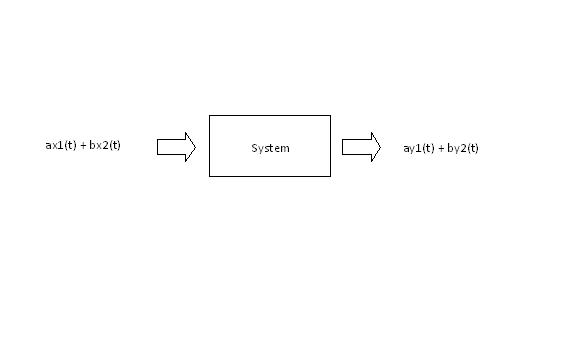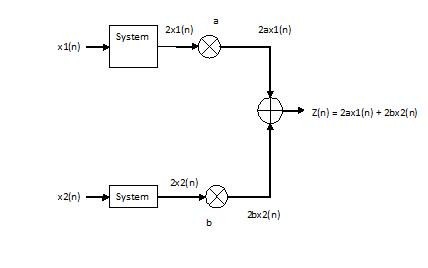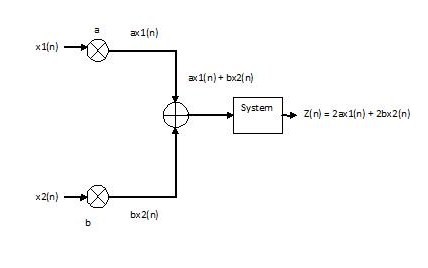(→Linear System) |
(→Linear System) |
||
| Line 14: | Line 14: | ||
Proof: | Proof: | ||
| + | |||
[[Image: System1_ECE301Fall2008mboutin.jpg]] | [[Image: System1_ECE301Fall2008mboutin.jpg]] | ||
[[Image:System2_ECE301Fall2008mboutin.jpg]] | [[Image:System2_ECE301Fall2008mboutin.jpg]] | ||
| + | |||
| + | |||
| + | Based on Prof Mimi's definition 3 of Linearity, since the system produces the same output for both cases, the system is linear. | ||
==Non-Linear System== | ==Non-Linear System== | ||
x[n] <math>\rightarrow</math> system <math>\rightarrow</math> <math>y[n] = x[n]^2</math> | x[n] <math>\rightarrow</math> system <math>\rightarrow</math> <math>y[n] = x[n]^2</math> | ||
Revision as of 15:30, 11 September 2008
Linearity
In my own words, a linear system is a system in which superposition applies. For example, if two inputs x1(t) and x2(t) are applied to the system, the output of the system will the sum of the responses to both inputs, y(t) = y1(t) + y2(t).
For example,
x1(t) + x2(t) $ \rightarrow $ system $ \rightarrow $ y(t) = y1(t) + y2(t)
Linear System
x[n] $ \rightarrow $ system $ \rightarrow $ y[n] = 2x[n]
Proof:
Based on Prof Mimi's definition 3 of Linearity, since the system produces the same output for both cases, the system is linear.
Non-Linear System
x[n] $ \rightarrow $ system $ \rightarrow $ $ y[n] = x[n]^2 $




